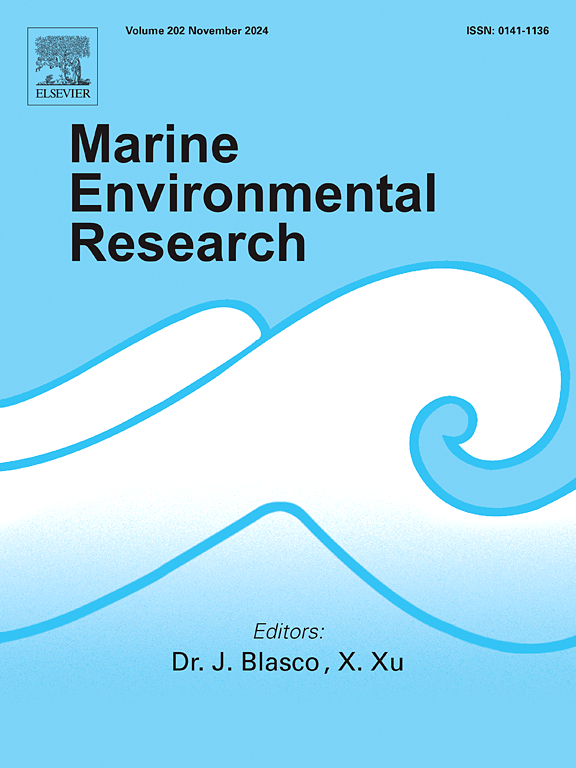Effects of co-treatment with nano/microplastics and hydroxychloroquine on early development stages of Salmo trutta
IF 3
3区 环境科学与生态学
Q2 ENVIRONMENTAL SCIENCES
引用次数: 0
Abstract
As a potential remedy for COVID-19 treatment, hydroxychloroquine (HCQ) attracted considerable scholarly attention early in the pandemic. However, the ecological consequences of HCQ are not well understood, especially regarding their interactions with plastic waste such as nano-and microplastics (PS). This study aimed to investigate colloidal stability, bioaccumulation, and acute toxicity of carboxylate-modified polystyrene-based PS and HCQ, both alone and in combination, to Salmo trutta embryos and larvae. Spectroscopic properties of PS were found to change over time and to be affected by the presence of HCQ in the incubation water of organisms. Confocal microscopy showed that PS and HCQ, both alone and in combination, caused damage to the chorion of the exposed fish embryos. Particles of PS were detected in external tissues of larvae. The impact of the tested substances on fish was found to be dependent on the PS particle size, exposure duration, and the life stage of fish.

纳米/微塑料与羟氯喹共处理对小龙虾早期发育的影响
作为治疗COVID-19的潜在补救措施,羟氯喹(HCQ)在大流行早期引起了相当大的学术关注。然而,HCQ的生态后果尚不清楚,特别是它们与纳米和微塑料(PS)等塑料废物的相互作用。本研究旨在研究羧酸改性聚苯乙烯基PS和HCQ单独或联合使用对鲑胚胎和幼虫的胶体稳定性、生物蓄积性和急性毒性。发现PS的光谱特性随时间而变化,并受到生物孵育水中HCQ存在的影响。共聚焦显微镜显示,PS和HCQ单独或联合作用均对暴露的鱼胚的绒毛膜造成损伤。幼虫外组织中检测到PS颗粒。测试物质对鱼类的影响与PS颗粒大小、暴露时间和鱼类的生命阶段有关。
本文章由计算机程序翻译,如有差异,请以英文原文为准。
求助全文
约1分钟内获得全文
求助全文
来源期刊

Marine environmental research
环境科学-毒理学
CiteScore
5.90
自引率
3.00%
发文量
217
审稿时长
46 days
期刊介绍:
Marine Environmental Research publishes original research papers on chemical, physical, and biological interactions in the oceans and coastal waters. The journal serves as a forum for new information on biology, chemistry, and toxicology and syntheses that advance understanding of marine environmental processes.
Submission of multidisciplinary studies is encouraged. Studies that utilize experimental approaches to clarify the roles of anthropogenic and natural causes of changes in marine ecosystems are especially welcome, as are those studies that represent new developments of a theoretical or conceptual aspect of marine science. All papers published in this journal are reviewed by qualified peers prior to acceptance and publication. Examples of topics considered to be appropriate for the journal include, but are not limited to, the following:
– The extent, persistence, and consequences of change and the recovery from such change in natural marine systems
– The biochemical, physiological, and ecological consequences of contaminants to marine organisms and ecosystems
– The biogeochemistry of naturally occurring and anthropogenic substances
– Models that describe and predict the above processes
– Monitoring studies, to the extent that their results provide new information on functional processes
– Methodological papers describing improved quantitative techniques for the marine sciences.
 求助内容:
求助内容: 应助结果提醒方式:
应助结果提醒方式:


